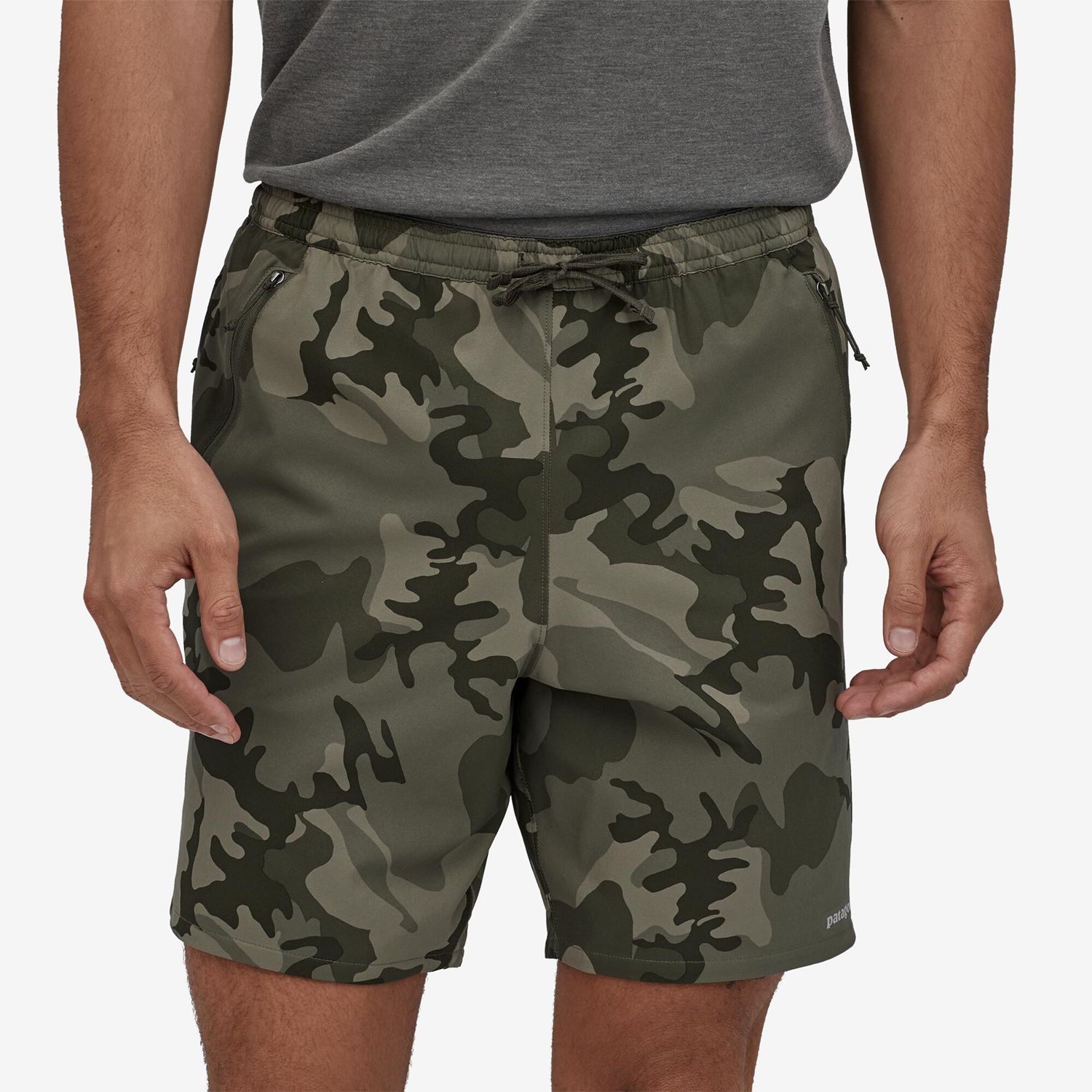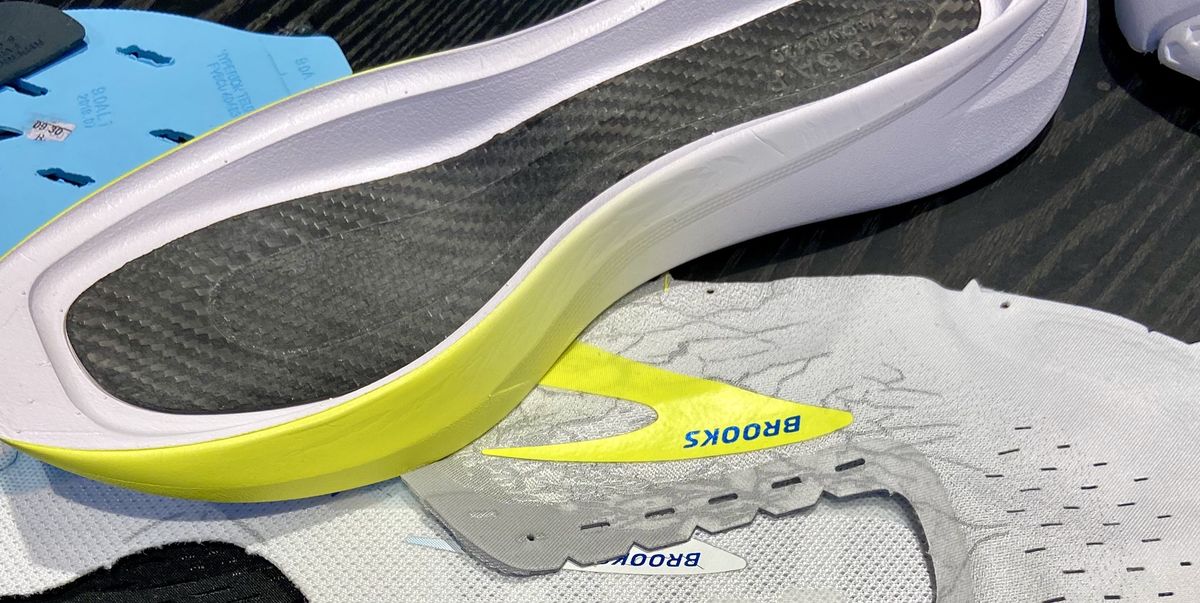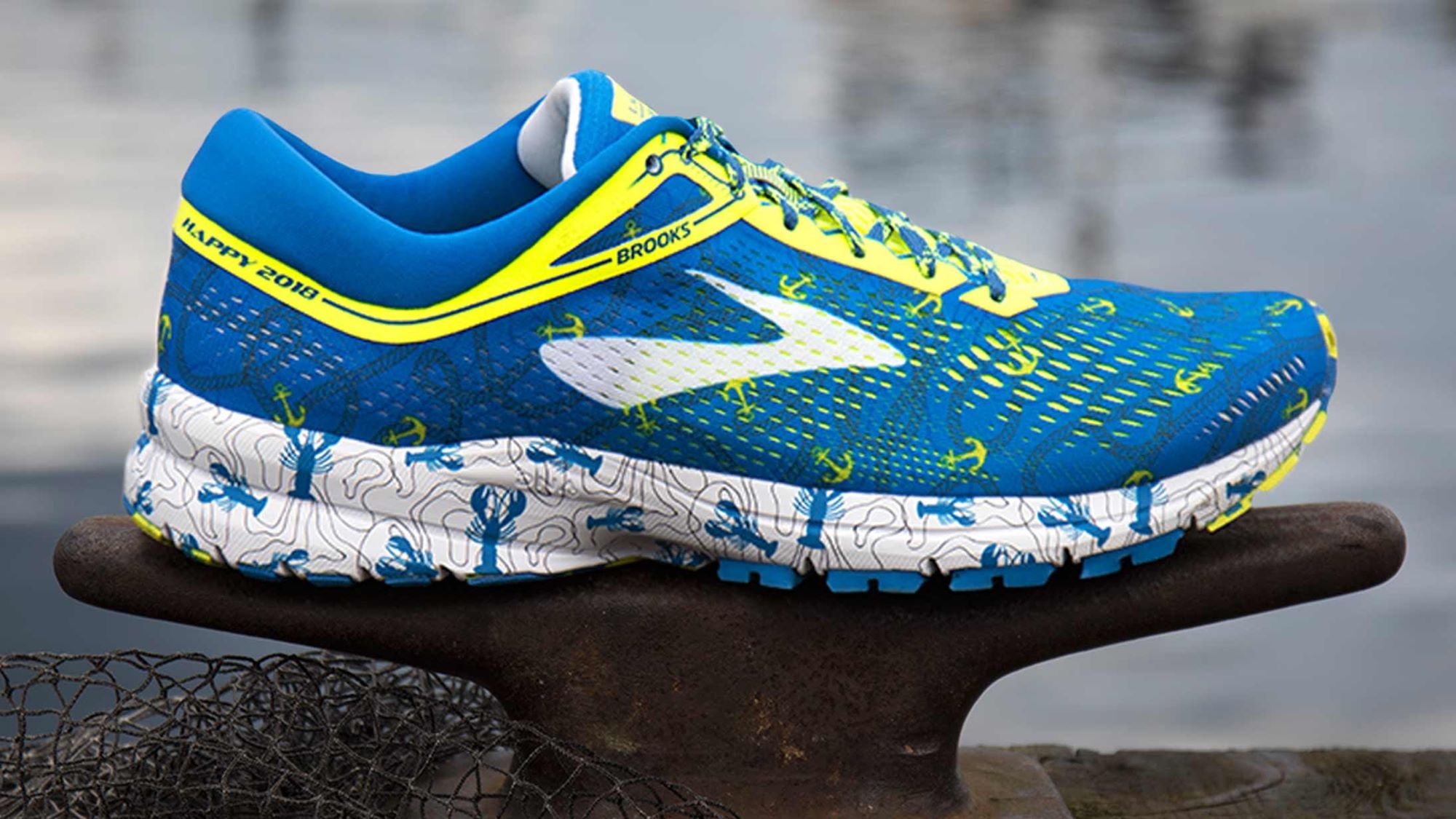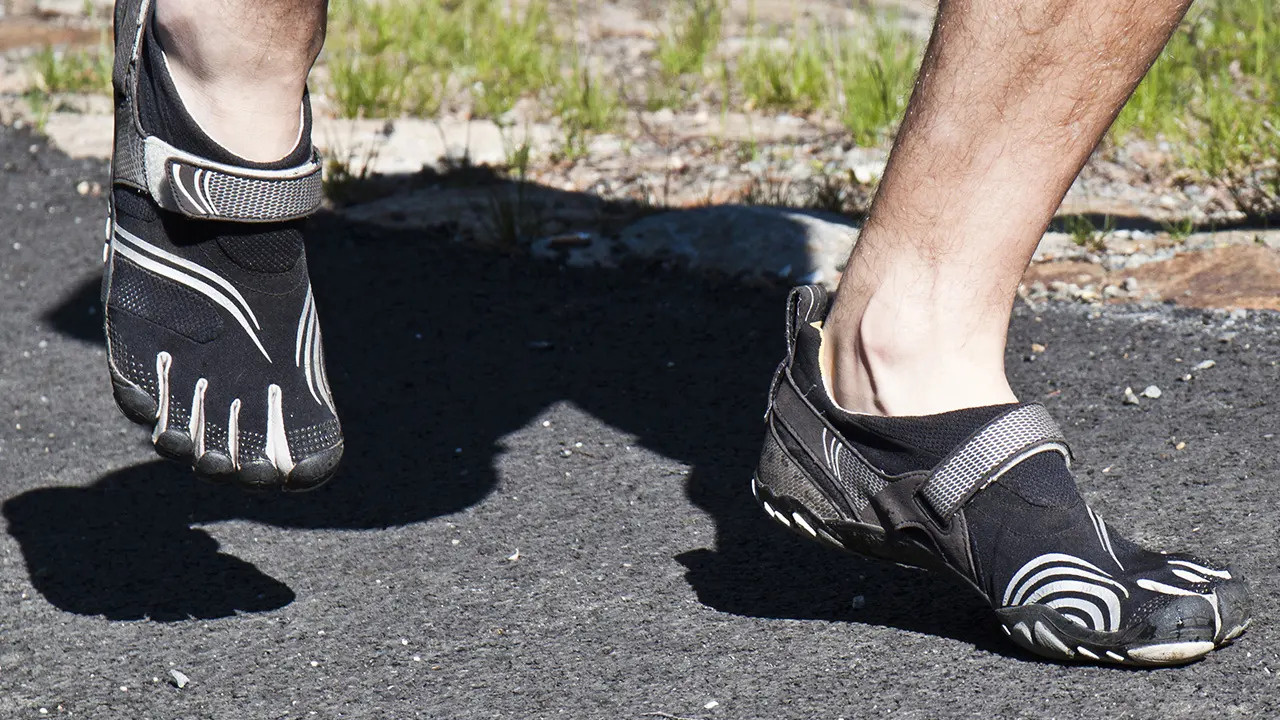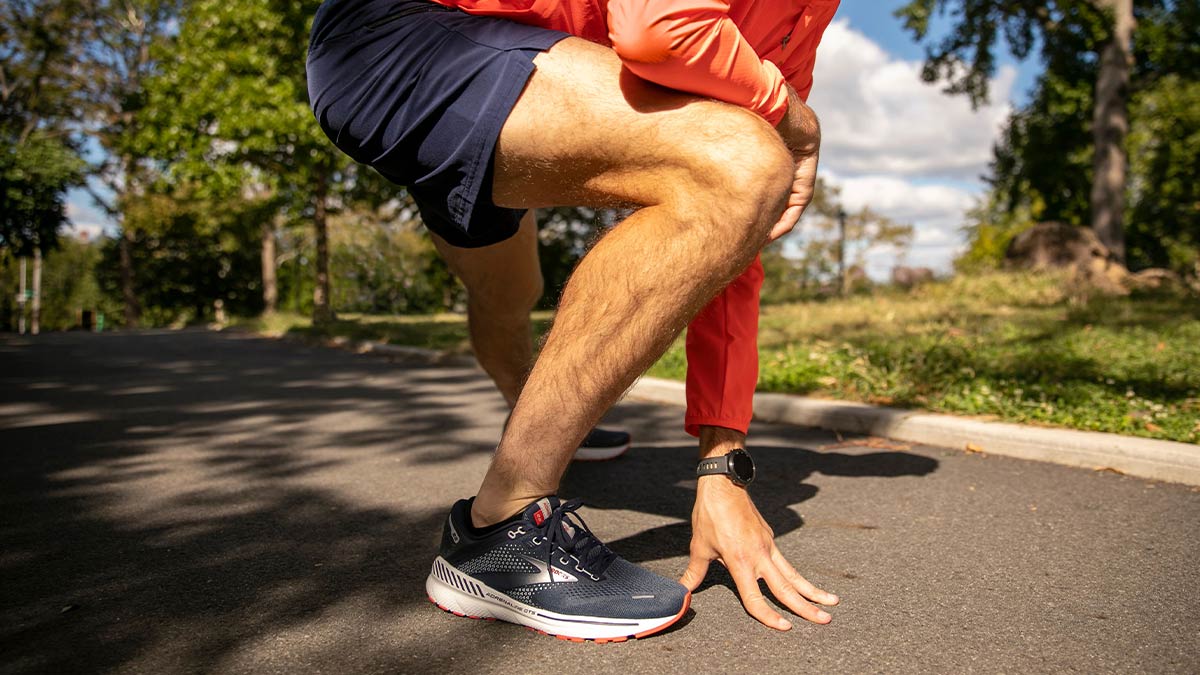

Featured
How To Tell What Running Shoes I Need
Modified: August 21, 2023
Discover how to determine the perfect running shoes for your needs with our featured guide. Find the ideal fit to enhance your running experience and prevent injuries.
Introduction
Choosing the right running shoes is crucial for every runner, whether you are a beginner or an experienced athlete. Wearing the right shoes can enhance your comfort, prevent injuries, and even improve your performance. But with so many options available on the market, how do you know what running shoes you need?
In this comprehensive guide, we will explore various factors to consider when choosing the perfect running shoes for your needs. We will delve into understanding your foot type, determining your pronation type, assessing your gait pattern, considering specific running surfaces, evaluating your current shoes, and seeking expert advice. By the end of this article, you will have the knowledge and tools necessary to make an informed decision.
Before we dive into the details, it is important to emphasize that everyone’s feet are unique. What works for one person may not work for another. It is essential to listen to your body and pay attention to how your feet feel during and after a run. Your running shoes should provide adequate support, cushioning, and stability based on your individual needs, preferences, and running style.
Now, let’s explore each step in the process of determining what running shoes you need, starting with understanding your foot type.
Understanding Your Foot Type
Before you can choose the right running shoes, it’s important to understand your foot type. Different foot types have varying pronation patterns, which can impact the type of shoe that will provide you with the best support and stability.
Here are the three main types of foot arches:
- High arches: If you notice a distinct curve along the inside of your foot with a narrow connection between your heel and the ball of your foot, you likely have high arches. People with high arches tend to underpronate, which means their feet roll outward during the running gait cycle. To accommodate this, you should look for shoes with ample cushioning and flexibility to help absorb shock and promote a more neutral gait.
- Normal arches: If you have a visible but moderate curve along the inside of your foot, you have normal arches. This is considered the most common foot type. With normal arches, your feet have a balanced pronation pattern where they roll slightly inward upon impact and evenly distribute the shock. Look for shoes with a combination of cushioning and stability to support your foot’s natural movement.
- Flat arches: If your foot has little to no arch, you have flat arches. This means your feet tend to overpronate, rolling excessively inward when you run. To address overpronation, choose running shoes with motion control features or added stability. These shoes are designed to control the inward roll and provide support to prevent injuries.
Identifying your foot type is the first step in determining the type of running shoe that will work best for you. However, it’s worth noting that there is some degree of variation among individuals, and your feet may not fit perfectly into one category. If you’re unsure about your foot type, you can consult a podiatrist or visit a specialty running store where professionals can analyze your feet and recommend suitable shoes.
Now that you have a better understanding of your foot type, let’s move on to determining your pronation type.
Determining Your Pronation Type
Pronation refers to the natural inward rolling motion of the foot as it strikes the ground during the running or walking gait cycle. Understanding your pronation type is crucial in choosing running shoes that provide the right amount of support for your feet.
There are three main pronation types:
- Neutral pronation: Also known as normal pronation, this is the ideal pronation type. The foot rolls slightly inward upon impact and then evenly distributes the force across the entire foot. If you have neutral pronation, you should look for running shoes with a balance of cushioning, flexibility, and stability to maintain your natural gait pattern.
- Overpronation: If your feet roll excessively inward during the gait cycle, you have overpronation. Overpronation can contribute to misalignment and increase the risk of injuries, such as shin splints or plantar fasciitis. To address overpronation, you should choose shoes with stability or motion control features. These shoes provide extra support and help to correct the foot’s inward roll.
- Underpronation (Supination): Underpronation occurs when the foot doesn’t roll enough inward after landing. This places excessive stress on the outer edge of the foot. People with high arches tend to be more prone to underpronation. If you have underpronation, look for running shoes with ample cushioning to absorb shock and promote a more neutral gait.
There are various methods you can use to determine your pronation type. One simple way is to examine the wear pattern on your current running shoes. If the wear is concentrated on the inside edge of the shoe, you may have overpronation. If the wear is mostly on the outside edge of the shoe, you may have underpronation. If the wear is evenly distributed, you likely have neutral pronation.
Another option is to perform a wet foot test. Wet the sole of your foot, step onto a piece of paper or dark colored surface, and observe the imprint. If you see a complete imprint with a distinct curve along the inside of the foot, you likely have normal pronation. If the imprint shows most of the foot with little to no curve, you might have overpronation. If the imprint shows only the outer edge of the foot, you might have underpronation.
Remember that these methods provide a general indication, but it’s always best to seek professional advice or visit a specialty running store for a more accurate assessment of your pronation type.
Now that you understand your pronation type, let’s move on to assessing your gait pattern.
Assessing Your Gait Pattern
Understanding your gait pattern is essential for selecting running shoes that support your specific movement and minimize the risk of injuries. Your gait pattern refers to the way in which your feet and legs move while you run.
Here are the three main gait patterns:
- Neutral Gait: If you have a neutral gait, your feet strike the ground evenly, and your ankles remain in a relatively straight line. You have a smooth heel-to-toe transition, and your body weight is distributed evenly. Runners with a neutral gait are fortunate, as they have a lower risk of injury and can choose a wide range of running shoes that provide comfort and support.
- Overstriding: Overstriding occurs when the foot lands far in front of the body’s center of gravity. This gait pattern puts unnecessary stress on the joints and can lead to issues such as shin splints or knee pain. If you overstride, focus on finding running shoes with extra cushioning in the heel area and consider working on your running form to reduce the excessive forward reach of your feet.
- Understriding: Understriding, also known as a short stride, happens when the foot lands closer to the body’s center of gravity. This gait pattern may result in increased impact forces and reduced efficiency. If you understride, look for running shoes that provide good responsiveness and encourage a longer stride. Shoes with a higher heel-to-toe drop or lighter weight might be beneficial for improving your gait.
An effective way to assess your gait pattern is by performing a gait analysis. This can be done by visiting a specialty running store or working with a running coach or podiatrist. They will observe your running form and provide valuable insights into your gait mechanics.
Another method is to analyze your running form through video recording. Set up a camera at a side view angle while you run on a treadmill or outdoors. Review the footage and look for any noticeable deviations in your gait, such as excessive heel striking, foot pronation, or hip drop. Identifying these patterns can help guide your shoe selection and allow you to make necessary adjustments to your form.
By understanding your gait pattern, you can choose running shoes that cater to your specific needs, promoting a more efficient and comfortable running experience.
Now that you have assessed your gait pattern, it’s time to consider the specific running surfaces you frequently encounter.
Considerations for Specific Running Surfaces
When choosing running shoes, it is important to consider the specific surfaces on which you will be running. Different surfaces can impact the amount of cushioning and traction you need. Understanding these considerations will help you select shoes that offer optimal performance and protection for your chosen running terrain.
Here are some common running surfaces and the factors to consider for each:
- Treadmill: If you primarily run on a treadmill, you will want to choose running shoes with good shock absorption to cushion your feet against the impact on the treadmill belt. Look for shoes that provide ample cushioning and flexibility without compromising stability.
- Pavement/Asphalt: Running on hard surfaces like pavement or asphalt can be taxing on your joints and feet. Look for running shoes with generous cushioning to help absorb the impact and prevent discomfort or injuries. Additionally, shoes with durable outsoles that offer good traction are beneficial for grip on these surfaces.
- Trails: Trail running requires shoes with specific features to handle uneven terrain, rocks, and roots. Look for trail running shoes with aggressive outsoles for superior traction. These shoes often have added protection features, like rock plates or toe guards, to shield your feet from potential hazards on the trails.
- Track: If you frequently run on a track, lightweight and responsive running shoes are the way to go. Look for shoes with minimal cushioning and a lower heel-to-toe drop for better energy return. These shoes are designed to maximize speed and performance on a smooth, flat surface.
By considering the specific running surfaces you encounter, you can ensure that your shoes are well-suited to provide the necessary support, cushioning, and traction for a comfortable and safe running experience.
Now that you have considered the running surfaces, it’s time to evaluate your current pair of running shoes to gain further insight.
Evaluating Your Current Shoe
Before diving into the process of choosing new running shoes, take a moment to evaluate your current pair. By assessing how your current shoes perform and considering any issues or discomfort you may have experienced, you can gain valuable insights to inform your future shoe selection.
Here are some key factors to consider when evaluating your current running shoe:
- Wear Patterns: Examine the wear patterns on the soles of your shoes. Are they evenly worn or concentrated in specific areas? Uneven wear patterns may indicate that your shoes are not providing adequate support or cushioning in certain areas. Pay attention to wear around the heels, arches, and forefoot.
- Comfort Level: Evaluate how comfortable your shoes feel during and after a run. Do you experience any discomfort, such as hot spots, blisters, or pain? Your shoes should provide a snug yet comfortable fit, with enough room for your toes to move naturally.
- Stability and Support: Consider the level of stability and support your current shoes offer. Do you feel stable and balanced when running? If you have issues with pronation or instability, your shoes should provide the necessary features to address these concerns.
- Cushioning: Assess the level of cushioning in your current shoes. Do they provide enough shock absorption to protect your joints? Are they too firm or too soft? The cushioning should be appropriate for your running style and the surfaces you typically run on.
- Flexibility: Test the flexibility of your shoes. They should bend and flex at the appropriate points, allowing your feet to move naturally. If your shoes feel stiff or inhibit your foot’s range of motion, it may be time to consider a different pair.
By evaluating these aspects of your current running shoes, you can gain valuable insights into what you need from your next pair. Make note of any specific features or characteristics that you liked or disliked, as this will help narrow down your options when searching for new shoes.
Now that you have assessed your current shoes, it’s time to delve into the various factors you should consider when choosing your next pair of running shoes.
Factors to Consider When Choosing Running Shoes
Choosing the right running shoes involves considering a variety of factors that affect comfort, fit, performance, and injury prevention. By understanding these factors and their impact on your running experience, you can make a more informed decision when selecting your next pair of running shoes.
Here are the key factors to consider:
- Foot Type and Pronation: As discussed earlier, understanding your foot type and pronation pattern is crucial. Match your foot type with the appropriate shoe category – neutral, stability, or motion control – to provide the right level of support and alignment for your feet.
- Comfort: Look for shoes that provide a comfortable fit. Ensure that there is enough room in the toe box for your toes to splay naturally, and the upper material should be breathable and flexible. Avoid any areas that cause discomfort or rubbing.
- Cushioning and Responsiveness: Consider your preference for cushioning. Some runners prefer highly cushioned shoes to absorb impact, while others prefer a more responsive and minimalistic feel. Choose a level of cushioning that suits your running style, body weight, and the surfaces you typically run on.
- Arch Support: Take into account the level of arch support you need. Some shoes provide built-in arch support, while others allow for the use of custom orthotics. Ensure that the arch support aligns with your foot’s natural arch.
- Fit and Size: Proper fit is essential for comfort and performance. Your running shoes should provide a snug fit without being too tight or loose. Consider trying on shoes later in the day when your feet may be slightly swollen to ensure the correct size.
- Weight: The weight of the shoe can impact your running efficiency and performance. Lighter shoes generally provide a more effortless running experience, but this may vary depending on your individual preferences and running goals.
- Durability: Consider the durability of the shoe, especially if you are a frequent runner. Look for shoes with durable outsoles, reinforced toe boxes, and sturdy upper materials that can withstand the demands of your running routine.
- Price: Set a budget for your running shoes. While it’s essential to invest in quality shoes that meet your needs, there are options available at different price points. Strike a balance between quality and affordability.
By considering these factors, you can narrow down your options and find running shoes that align with your specific requirements and preferences. Remember to prioritize comfort, support, and functionality over style or trendy features.
Now that you’re aware of the factors to consider, the next step is to test and try on different running shoes.
Testing and Trying Different Running Shoes
Once you have narrowed down the factors that are important to you in a running shoe, it’s time to test and try on different options. Trying on multiple pairs allows you to assess how they feel on your feet and ultimately choose the one that provides the best fit, comfort, and performance.
Here are some steps to follow when testing and trying different running shoes:
- Visit a Specialty Running Store: Consider visiting a specialty running store where knowledgeable staff can guide you through the selection process. They can offer valuable insights, perform gait analysis, and recommend shoes based on your specific needs.
- Try Different Brands and Models: Experiment with different brands and models to find the ones that feel the most comfortable and supportive. Each brand has its own unique fit and design, so don’t hesitate to try various options.
- Wear Appropriate Socks: Bring along the socks you typically wear for running to ensure an accurate fit. This will give you a better idea of how the shoes will feel during your actual runs. Avoid thick or padded socks, as they can alter the fit.
- Take Them for a Test Run: Many specialty running stores have a treadmill or designated area where you can test the shoes by taking them for a brief run. Pay attention to how they feel in terms of cushioning, support, and overall comfort. Trust your instincts and choose the pair that feels the best during the test run.
- Mimic Your Running Style: During the test run, try to replicate your typical running form as closely as possible. Focus on the feeling of each step and make note of any discomfort, instability, or irregularities in your gait.
- Consider Trying Different Sizes: If you’re unsure about the fit, don’t hesitate to try different sizes. Remember that shoe sizes can vary between brands, so it’s essential to prioritize how the shoes feel on your feet rather than being fixated on a specific number.
Take your time with the testing process and don’t rush into making a decision. It’s worth investing the time and effort to find the perfect pair of running shoes that will provide the support you need for miles of comfortable and enjoyable runs.
Now that you have tested and tried different running shoes, it can be beneficial to seek expert advice to further inform your decision.
Seeking Expert Advice
When it comes to choosing running shoes, seeking expert advice can be incredibly valuable. Professionals in the field of podiatry, sports medicine, or specialty running stores can provide personalized guidance based on their expertise and knowledge.
Here are some reasons why seeking expert advice is beneficial:
- Gait Analysis: Professionals can conduct a gait analysis to assess your running form, foot mechanics, and potential biomechanical issues. They can observe your gait patterns and provide recommendations tailored to your specific needs.
- Foot Evaluation: Experts can evaluate your foot structure, arch height, and any biomechanical abnormalities that may affect your choice of running shoes. They can help identify potential issues and advise on the appropriate shoe type and features for your feet.
- Custom Orthotics: If you have specific foot conditions or need additional support, experts can recommend and even custom-make orthotics that will fit inside your running shoes. Custom orthotics can address specific foot issues and provide enhanced comfort and stability.
- Product Knowledge: Professionals in specialty running stores have extensive product knowledge and experience with various shoe models and brands. They can provide valuable insights into the different features, cushioning technologies, and support systems of each shoe, helping you make more informed decisions.
- Personalized Recommendations: Experts can take into account your running goals, injury history, and personal preferences to offer personalized shoe recommendations. They can suggest options that align with your needs and provide the best chance for a successful and comfortable running experience.
Remember to communicate your concerns, preferences, and any past injuries or issues you’ve experienced while running. The more information you provide, the better the experts can guide you in finding the ideal running shoes.
It’s important to note that while seeking expert advice is beneficial, it should be used in conjunction with your own research and personal experience. Ultimately, the final decision should be based on what feels right for your feet and running style.
Now that you’ve gathered expert advice and considered different factors, you’re ready to make an informed decision on your next pair of running shoes.
Conclusion
Choosing the right running shoes is a critical decision for any runner, as it directly impacts comfort, performance, and injury prevention. By taking into account factors such as your foot type, pronation pattern, gait analysis, running surfaces, and expert advice, you can make an informed decision that suits your individual needs.
Understanding your foot type and pronation is the foundation for selecting the right type of shoe support. Evaluating your gait pattern and considering specific running surfaces further refines your decision-making process. Assessing your current shoe and trying on different options helps determine the right fit and level of comfort. Seeking expert advice can provide valuable insights and personalized recommendations.
Remember, finding the perfect running shoes may require experimentation and patience. Everyone’s feet are unique, and what works for one runner may not work for another. Trust your instincts, prioritize comfort and support, and listen to your body during the testing phase.
Lastly, investing in high-quality running shoes is an investment in your running journey. Your shoes are one of the most important pieces of running gear, and finding the right pair can make all the difference in your overall experience.
So, lace up, hit the road or trails, and enjoy the exhilarating feeling of running, supported by the perfect pair of running shoes!


